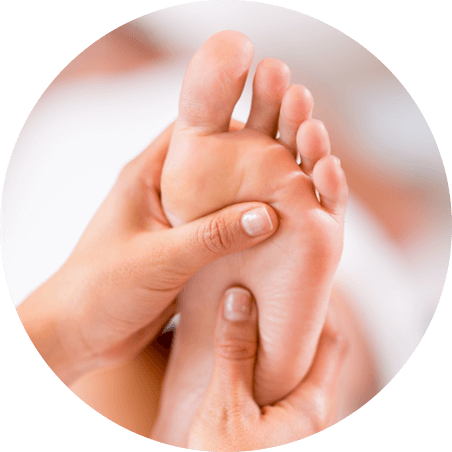Heel pain is one of the most common health conditions that most people go through. It mainly involves the foot and the ankle. Mainly, the reason can be continuous and extensive pressure on the foot. Any external factors causing great pressure on the heel can be the reason for heel pain.
When it comes to a sore heel, it is not constrained to a specific age or gender. However, the consequences of pain in the heel can be immobility or difficulty in performing daily activities, depending on the severity of the pain. Read on to know more in detail about the common causes and treatment procedures for heel pain.
Symptoms of Heel Pain- Points To Note
There are a few different symptoms that indicate pain in the heel, let’s have a look.
- Firstly, pain can arise behind the heel, underneath the heel, or in the heel bone.
- The pain usually is intense if getting up early in the morning. You may feel severe pain upon putting your feet on the floor.
- You can experience swelling and soreness in the heel.
The Lowdown On Heel Pain: List of Common Causes
There are several reasons for heel pain. It may be because of some injury, lack of rest, or continuous stress on the feet. Continuous wearing of flat shoes can also affect your heels. This may cause swelling or inflammation.
Among many other external factors, the following are some of the common causes of heel pain-
Stress factor
Continuous stress, exhausting exercise, sports, or heavy, labour-intensive work can cause heel pain. For example, if you are not wearing the right shoes for running or exercising, you must face stress fracture. Apart from that, osteoporosis is another reason for stressed feet.
Plantar Fasciitis
The plantar fascia is a strong and flexible, bone-like ligament that runs from the calcaneum to the tip of the foot. The heel bone is connected to the bones of the foot through it.
Sudden pressure, or damage that has occurred over a long period, can lead to micro-tears developing inside the plantar fascia. This thickens the plantar fascia, a condition known as Plantar Fasciitis. It results in pain. It can also affect the adjacent tissue and the heel bone causing inflammation.
Long-term plantar fasciitis causes heel spurs, a growth on the heel bone. Heel Spurs can also be a significant cause of heel pain.
Sever’s disease
Again, one of the most common causes of pain. This mainly causes pain in children and young adults ranging from 8-16 years. When a child goes through an excessive amount of exercise, like running or jumping, it causes stress on the heel bone. This leads to inflammation of the growth area of the heel bone, which causes pain.
Achilles tendonitis
The condition in which the large tendon in the back of the heel becomes inflamed is called Achilles tendinitis. Overstressed muscle and heel bones and injury are the most common causes of Achilles tendinitis. This results in acute heel pain. It is also known as tendinitis as tendinosis or tendinopathy.
Heel bursitis
The back of the heel or the bursa is a fibrous sac full of body fluid. When this area is inflamed, it causes pain. Pressure from the footwear can cause this foot condition. The heel pain may occur deep inside or at the back of the heel.
Treating Heel Pain- Points To Note For A Pain-free Life
Several treatments can help reduce heel pain while accelerating the recovery process. These are-
- Taking Proper Rest– Restrain from long walks long and standing for a long.
- Stretching– Stretching your calf muscles, lower leg, and plantar fascia will help relieve the pain.
- Pain Relief– Generally, applying a cold compress using an icepack on the affected area is necessary. You may take painkillers, such as non-steroidal anti-inflammatory drugs if your doctor suggests.
- Wearing the Right Footwear– Wearing shoes that are comfortable and that support your feet is ideal.
Conclusion
With proper care and medication, heel pain generally goes away within a year. However, it may seem frustrating to be restricted to resting. The majority of the time, the issue can be fixed by getting enough rest, and medical intervention is not required.



